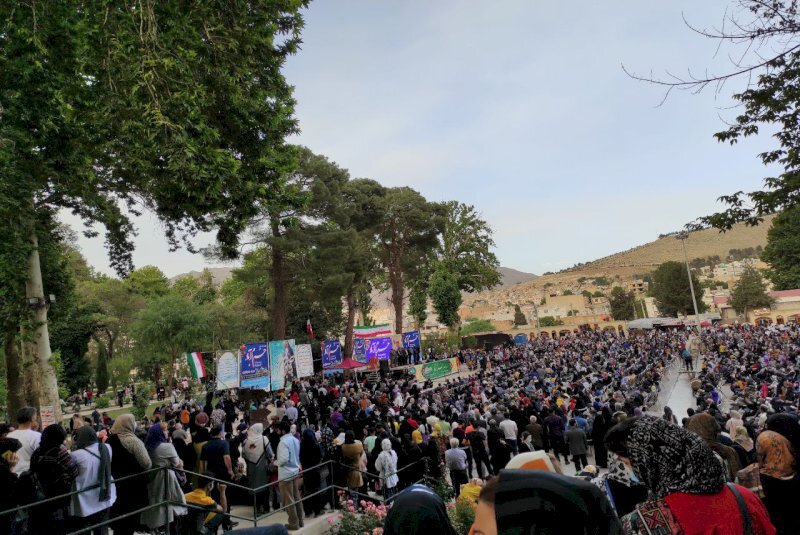Hundreds visit tribe festival in Lorestan

TEHRAN - Hundreds of people attended a tribe festival held in Lorestan province from May 8 to 12.
Some 38,000 people toured the Lorestan tribe festival, which brought together nomads and tribespeople from 30 Iranian provinces, the provincial tourism chief Seyyed Amin Qasemi said on Wednesday.
“Held at the historical complex of Falak-ol-Aflak, the fifth edition of the tribal festival aimed to boost domestic tourism,” the official said.
The event put the spotlight on traditional music and rituals, dishes, handicrafts, and souvenirs,” Qasemi stated.
Home to various nomads and tribal communities, Lorestan was inhabited by Iranian Indo-European peoples, including the Medes, c. 1000 BC. Cimmerians and Scythians intermittently ruled the region from about 700 to 625 BC. The Luristan (Lorestan) Bronzes noted for their eclectic array of Assyrian, Babylonian, and Iranian artistic motifs, date from this turbulent period.
Moreover, Lorestan was incorporated into the growing Achaemenid Empire in about 540 BC and successively was part of the Seleucid, Parthian, and Sasanid dynasties.
Also known as the ethnic-tourism or ethnic tourism, it provides the ground for potential sightseers to feel like indigenous people by living with a nomad or rural family or enjoying an independent stay. However, as the name implies, it’s a trip for recreational purposes rather than being an expedition for anthropological research.
Apart from modern roads, highways, and bridges that are ubiquitous in modern Iran, there are still arduous paths, flattened by the feet of nomads and the hooves of their livestock in the ever-repeating movement of migration for millennia.
Iran has a culturally-diverse society dominated by a wide range of interethnic relations. Native speakers of Persian (Farsi language) are considered as the predominant ethnic generally of mixed ancestry, and the country has important Turkic, Kurd, and Arab elements in addition to the Lurs, Baloch, Bakhtiari, and other smaller minorities such as Armenians, Assyrians, and Jews.
In fact, Persians, Kurds, and speakers of other Indo-European languages in Iran are descendants of the Aryan tribes who began migrating from Central Asia into what is now Iran in the second millennium BC.
Migration is a way of life for nomads because herding cattle is their main source of income. In spring they with all their belongings head for the cooler pastures usually on mountain hillsides where the grass is abundant for their flocks of sheep and goats. And in autumn they return to previous tropic plains as their well-fed livestock get stronger to bear the winter.
Staying with nomads during their migration, even for a day or two, maybe a lifetime experience. As a traveler, one has the chance to visit, live, eat, and sleep in a nomadic camp with a real nomad family. Colorful dresses, vast black tents, colored-eyed children with rosy cheeks, modest lifestyle, scenic landscape, and local dishes are probably among the delights of such visits.
Language, music, indigenous cuisine, clothing, songs, anecdotes, crafts, live performances, and local rituals such as celebrations and wedding ceremonies have always spurred many to experience life among the tribes.
The majority of the Iranian nomads use mobile internet, cell phones, etc as they still set up their tents on the flanks of the snow-capped mountains. And these days cars and rented trucks, rather than domestic animals, bring them, and their flocks to pastures high up on the highlands and vice versa.
Usually, nomads surprise visitors with the dignity in their rough and overworked hands and integrity in their compassionate eyes at first sight. In popular Iranian culture, literature, and public opinion, nomads have always been a proud part of the nation.
AFM
Leave a Comment